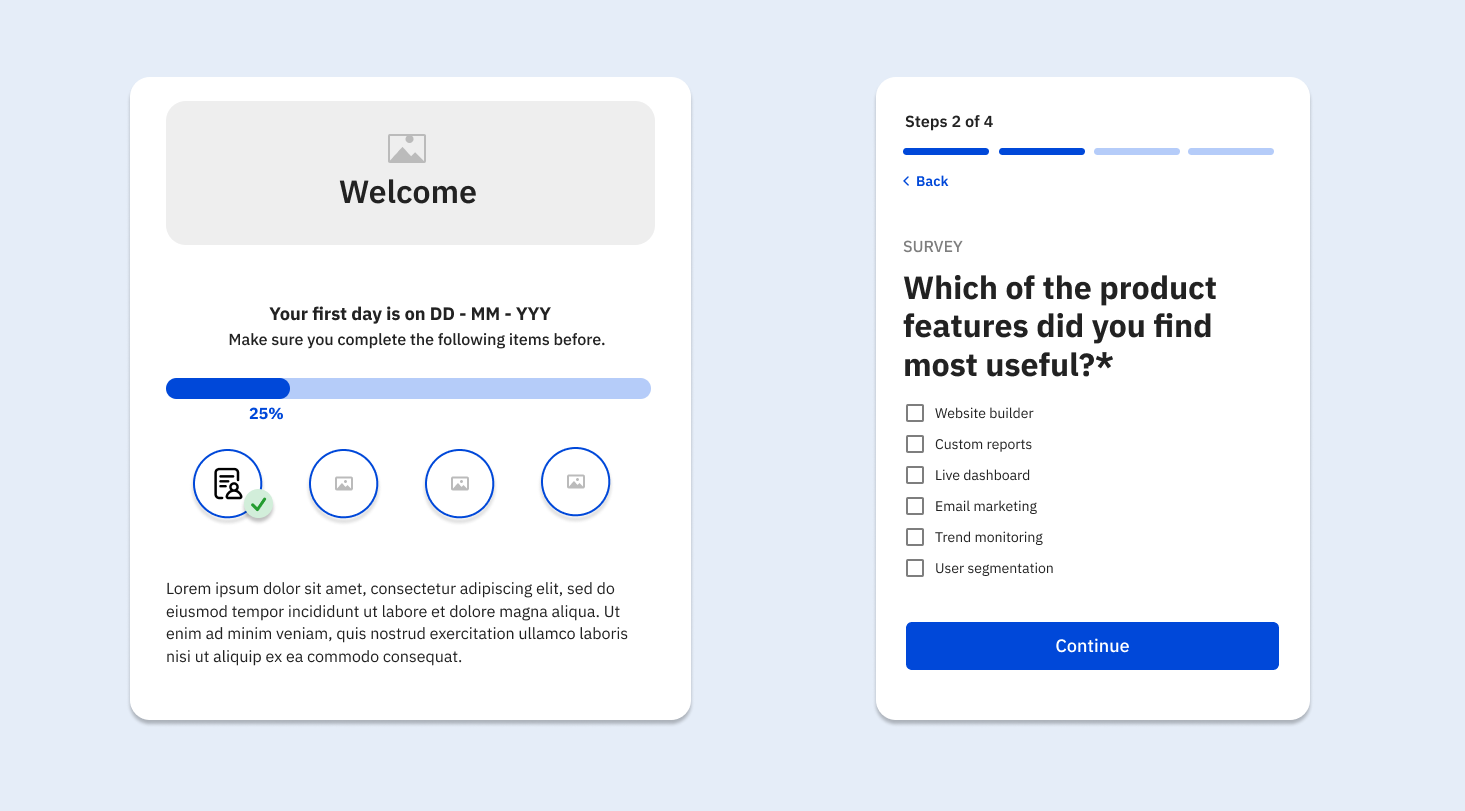Effective navigation is essential in digital design to ensure a seamless and intuitive user experience. Users should effortlessly navigate through interfaces, understanding their progress and options at every step. Let’s explore some key strategies and tools that you can leverage to optimise navigation and improve user engagement.
Segmented Progress Indicators
Imagine filling out a lengthy form or navigating through a multi-step process without knowing how far along you are. It’s frustrating and can lead to user abandonment. To mitigate this, incorporate segmented progress indicators that visually represent the user’s journey. These indicators break down complex tasks into manageable steps, providing users with a clear roadmap to their goals.
Whether it’s a progress bar or a step-by-step checklist, such indicators enhance transparency and empower users with a sense of control. Below we’ve added an example of how this can be incorporated in an email and a form.

Optimising Dropdown Menus
Dropdown menus are practical for presenting a large number of options, but they can become difficult to use if not properly optimised. Reserve dropdowns for substantial lists and avoid them for simple choices like yes/no queries. Organise options logically (alphabetically or numerically) to facilitate quick scanning and selection. For extensive lists (e.g., country selection), incorporate search or filtering functionalities to streamline user selection. Below we’ve added a custom solution we’ve incorporated in one of our Account Engagement forms.
Footer Navigation Redundancy
A user shouldn’t hit a “dead end” when they reach the footer of a webpage or a landing page. Repetition of key navigation items in the footer provides continuity and accessibility, especially for users who prefer to explore without scrolling back to the top. Including a search function in the footer can further enhance usability, enabling users to quickly locate desired content or information.
Thoughtful navigation design goes beyond aesthetics, it’s about empowering users with intuitive pathways and transparent guidance throughout their digital journey. By implementing these strategies and tools, you can create interfaces that are visually appealing, user-centric and encourage positive user experiences.
This blog is part of our series on User Experience. You can check out the other blogs here.

